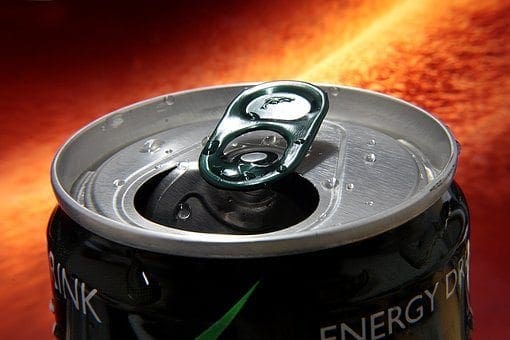Diets
Back Clinic Diets. The sum of food consumed by any living organism. The word diet is the use of specific intake of nutrition for health or weight management. Food provides people with the necessary energy and nutrients to be healthy. By eating various healthy foods, including good quality vegetables, fruits, whole-grain products, and lean meats, the body can replenish itself with the essential proteins, carbohydrates, fats, vitamins, and minerals to function effectively.
Having a healthy diet is one of the best things to prevent and control various health problems, i.e., types of cancers, heart disease, high blood pressure, and type 2 diabetes. Dr. Alex Jimenez offers nutritional examples and describes the importance of balanced nutrition throughout this series of articles. In addition, Dr. Jimenez emphasizes how a proper diet combined with physical activity can help individuals reach and maintain a healthy weight, reduce their risk of developing chronic diseases like heart disease, and ultimately promote overall health and wellness.

by Dr Alex Jimenez DC, APRN, FNP-BC, CFMP, IFMCP | Diets, Fitness
Schools won’t have to cut more salt from meals just yet and some will be able to serve kids fewer whole grains, under changes to federal nutrition standards announced Monday.
The move by President Donald Trump’s Agriculture Department partially rolls back rules championed by former first lady Michelle Obama as part of her healthy eating initiative. Separately, the Food and Drug Administration said on Monday it would delay � for one year � Obama administration rules that will require calorie labels on menus and prepared food displays. The rule was scheduled to go into effect later this week.
As his first major action in office, Agriculture Secretary Sonny Perdue said the Agriculture Department will delay an upcoming requirement to lower the amount of sodium in meals while continuing to allow waivers for regulations that all grains on the lunch line must be 50 percent whole grain.
Schools could also serve 1 percent flavored milk instead of the nonfat now required.
“If kids aren’t eating the food, and it’s ending up in the trash, they aren’t getting any nutrition � thus undermining the intent of the program,” said Perdue, who traveled to a school in Leesburg, Virginia, to make the announcement.
Health advocates who worked closely with the Obama administration on nutrition issues criticized the two moves, saying that the Trump administration is messing with rules that are popular with the public.
The menu labeling law would have required chain restaurants and other establishments that sell prepared foods to post the calorie content of food. The FDA said the delay “allows for further consideration” of ways to reduce costs or make the rules more flexible as supermarkets and pizza delivery companies have lobbied against it.
“The Trump administration is showing in two important ways that it puts business interests before its populist rhetoric on the campaign trail and what mainstream Americans want,” said Margo Wootan, a lobbyist for the Center for Science in the Public Interest.
The school meal changes reflect suggestions from the School Nutrition Association, which represents school nutrition directors and companies that sell food to schools. The group often battled with the Obama administration, which phased in the healthier school meal rules starting in 2012.
The Obama administration rules set fat, sugar and sodium limits on foods in the lunch line and beyond. Schools have long been required to follow government nutrition rules if they accept federal reimbursements for free and reduced-price meals for low-income students, but these standards were stricter. Obama pushed the changes as part of her “Let’s Move” campaign to combat childhood obesity.
The Trump administration changes leave most of the Obama administration’s school meal rules in place, including requirements that students must take fruits and vegetables on the lunch line. Some schools have asked for changes to that policy, saying students often throw them away.
But the health advocates who have championed the rules are concerned about the freeze in sodium levels, in particular. School lunches for elementary school students are now required to have less than 1,230 mg of sodium, a change put in place in 2014. The changes would keep the meals at that level, delaying until at least 2020 a requirement to lower sodium to 935 mg. That requirement was scheduled to begin in the 2017-2018 school year.
“By forgoing the next phase of sodium reduction, the Trump administration will be locking in dangerously high sodium levels in school lunch,” Wootan said.
Before he signed the proclamation, Perdue and Senate Agriculture Chairman Pat Roberts, R-Kan., ate chicken nuggets, fruit and salad with children at Catoctin Elementary. Perdue said he doesn’t see the changes as a rollback, but “we’re just slowing down the process.” He praised Obama’s nutrition efforts as first lady but said he wants the healthier meals to be more palatable.
He said the department will work on long-term solutions to further tweak the rules.
Becky Domokos-Bays, the nutrition director for Loudon County, Virginia, including Catoctin Elementary, said she has been experimenting with the lower sodium levels and she’s had a hard time adjusting some of the more popular foods she serves. Kids like her chicken noodle soup, she says, but rejected it when she lowered the sodium content because it was thinner and had less taste.
Perdue, a former governor of Georgia, said some schools in the South have had problems with grits, because “the whole grain variety has little black flakes in it” and kids won’t eat it.
“The school is compliant with the whole-grain requirements, but no one is eating the grits,” Perdue said. “That doesn’t make any sense.”
Others don’t want to see any changes to the healthier meals. Outside the school, Leesburg Mayor Kelly Burk and about 20 others protested ahead of the announcement. One sign read: “Sonny � Our children do not want big business soda, chips and fries!”
“Some people don’t like regulations, but these are important regulations that impact kids,” Burk said.

by Dr Alex Jimenez DC, APRN, FNP-BC, CFMP, IFMCP | Diets, Wellness
Doctor of Chiropractic, Dr. Alexander Jimenez takes a look at the latest diet drink with fiber.
COCA-COLA
Coca-Cola recently unveiled a new pop with the ingredient that�s sure to drop easily with its customers: dietary fiber.
The beverage firm introduced the product, which will be called Coca-Cola Plus. The soda is exclusively sold in Japan and features five grams of indigestible dextrin (which is a form of dietary fiber).
According to an announcement from Coke in February, the product is an integral part of Coca-Cola Japan�s Food of Specified Health Use (FOSHU) beverages. FOSHU beverages are intended to appeal to Japan�s health conscious consumers who are 40 and older. Coke, which has had a popular FOSHU tea beverage in the marketplace since 2014, said it took over a decade to research and develop Coke Plus, which was recently accepted by the Japanese government. If its � � claims that are healthy will actually do that much to help consumers, yet, individuals aren�t too certain.
�Drinking one Coca-Cola Plus per day with food may help suppress fat absorption after eating,� the firm asserted in a press release, and help moderate the levels of triglycerides in the blood.
Companies adding dietary fiber to its drinks is nothing new. Pepsi added beverages in its Japanese market a few years ago and dietary fiber and made similar claims about fat absorption and triglycerides that Coke did in the statement above.
�Unless Pepsi can provide data from controlled studies in humans to the contrary, their claim should be thought of as bogus and deceptive,� Walter Willett, Fredrick John Stare Professor of Epidemiology and Nutrition and chair of the Department of Nutrition at Harvard School of Public Health, told Time in 2012.
HuffPost reached out to Miriam E. Nelson, Ph.D, one of the state�s leading nutritionists and director of the Sustainability Institute at the University of New Hampshire, to talk about the inclusion of dietary fiber to pop.
�There isn’t any evidence that supplying fiber, scattering it in here or there, that that fiber has an entire health benefit, so that�s an important difference,� Nelson told HuffPost. �The evidence for dietary fiber having a health-promoting impact is with eating a routine of foods (such as fruits and vegetables and whole grains) that supply that fiber.�
Nelson said that adding the fiber won�t do anything harmful to the customer, but just adding the fiber by itself won�t have the well-being aspects a fiber-rich diet would offer. But she did find one part �disturbing� about the fiber claims.
“The companies are trying to add a positive halo or health attribute within a product which doesn�t have some health benefits,� Nelson said. If it�s a sugar-sweetened beverage afterward it truly has a lot of health benefits that are negative, so it�s trying to counterbalance that. That�s the disturbing part, since I believe they�re trying to link with the consumer and develop a health aspect where there isn�t one.�
If You Need To Incorporate More Fiber Into Your Daily Diet, Do It With Whole Grains, Fruits & Veggies

by Dr Alex Jimenez DC, APRN, FNP-BC, CFMP, IFMCP | Diets, Health, Nutrition
This article originally appeared on Time.com.�
Energy drinks are known for their high caffeine content, which often tops that of soda and even coffee. But they seem to affect people�s hearts and blood pressure differently than other caffeinated beverages, suggests a small new study published in the Journal of the American Heart Association.
In the study, researchers divided 18 men and women into two groups. Half were given a 32-ounce commercially available energy drink with 320 mg of caffeine, as well as other ingredients like taurine and ginseng (both dietary supplements). People in the other group were given a soda-like control drink of the same size that contained the same amount of caffeine with a bit of lime juice, cherry syrup and carbonated water. After six days, the groups switched and drank the other beverage.
The researchers measured everyone�s blood pressure at the start of the study and one, two, four, six and 24 hours after drinking the beverage. They also measured everyone�s heart activity using an electrocardiogram.
People who drank the energy drinks had a QT interval�meaning the time it takes the heart�s ventricles to prepare to beat again�10-milliseconds higher than those who drank the caffeinated control beverages. Irregularity in the QT interval can sometimes lead to abnormal heart beats. Fletcher says that the disparity may be important, since some medications that affect the QT interval by 6 milliseconds carry warning labels.
RELATED:�Fergie and Josh Duhamel Swear by This Power Smoothie for All-Day Energy
Both groups had higher blood pressure after their drinks, though never out of normal range. The blood pressure of people who had the control drink returned to baseline levels after six hours. But when people drank the energy beverage, their blood pressure remained elevated for more than six hours. The researchers believe that could mean that the other ingredients in energy drinks may alter blood pressure beyond the effects of caffeine alone.
�What the growing body of evidence is pointing to is that there are effects on the heart that are different than caffeine alone,� says study author Emily Fletcher, a deputy pharmacy flight commander from David Grant U.S.A.F. Medical Center at Travis Air Force Base in California. �Consumers should be aware that drinking an energy drink is not the same as drinking coffee or soda.�
More research is needed. The study was small, and researchers only looked at the effects of the beverages on people who were healthy�and not at the differences over the long term. The American Beverage Association, which represents the non-alcoholic beverage industry, said in a statement that �energy drinks have been extensively studied and confirmed safe for consumption by government safety authorities worldwide including a recent review by the European Food Safety Authority.�
Fletcher says that the findings suggest people should approach energy drinks with some caution, especially those who have risk factors for heart issues. �I would recommend only moderate consumption of energy drinks and particular avoidance in people with underlying cardiac disease or hypertension,� says Fletcher, �or during activities that would also increase your blood pressure and heart rate, such as exercise or sports.�

by Dr Alex Jimenez DC, APRN, FNP-BC, CFMP, IFMCP | Diets, Fitness
American toddlers are more likely to eat french fries than green vegetables on any given day, according to a new national survey on children’s eating habits.
Many young kids also go without any vegetables at all, the survey found.
One in four 6- to 11-month-olds and one in five 1-year-olds had no reported vegetable consumption at all on days they were surveyed, the researchers reported.
“The American Academy of Pediatrics (AAP) recommends vegetable consumption with every meal and snack,” said lead researcher Gandarvaka Miles, a doctoral candidate with the University of North Carolina-Chapel Hill Gillings School of Global Public Health. “On two random days, parents didn’t report any vegetable consumption for these children.”
The survey also found that nearly three out of every five infants aren’t getting any breast milk at all.
These numbers are concerning because kids’ eating patterns develop at a young age, Miles said. Poor eating habits when young can put infants and toddlers on a road to continued poor nutrition into adulthood, she added.
“As we learn more about how dietary habits are established, we are seeing that even as early as infancy, breast milk consumption and consumption of fruits and vegetables can help lay the foundation for healthy eating habits,” Miles said.
She and her colleagues used data from 2005 to 2012 taken from the National Health and Nutrition Examination Survey, conducted by the U.S. Centers for Disease Control and Prevention to track health and diet trends among Americans.
In the survey, mothers were asked to provide a detailed description of what their children ate on two randomly chosen days, Miles said.
About 26 percent of 1-year-olds ate french fries the day before the survey, compared with 7.5 percent who ate dark green vegetables and about 17 percent who ate deep yellow vegetables, according to the results.
The survey also revealed a decline in consumption of healthy fruits and vegetables among 1-year-olds.
The percentage of 1-year-olds eating canned or frozen fruit decreased by more than 10 percent between 2005 and 2012, and consumption of dark green vegetables decreased by more than 50 percent.
Most other vegetable categories also saw a decline in consumption among 1-year-olds — even french fries, which fell from about 32 percent to 26 percent.
The researchers found that nearly 60 percent of infants younger than 6 months did not consume any breast milk. However, they did find that more families are exclusively breast-feeding during the first six months of life, in alignment with AAP recommendations.
It can be difficult to find fresh fruits and vegetables in many parts of the country, said Dr. Annemarie Stroustrup, an associate professor with the Icahn School of Medicine at Mount Sinai in New York City. She was not involved with the study.
“In the wealthier parts of town, you can walk a block and you find a grocery that has a wide variety of fruits and vegetables,” Stroustrup said. “When you go to some of the lower-income neighborhoods, it’s often quite a distance to travel to get somewhere that has a greater variety of fresh foods.”
Toddlers also don’t make it easy on parents, she added.
“Toddlers are not necessarily going to be developmentally ready to try new foods. Toddlers are newness-averse,” Stroustrup said. “You often have to offer a new food to a toddler up to 10 times before that toddler will accept it as something they will eat.”
But it’s important to be diligent and keep trying, both Stroustrup and Miles said.
“Food preferences that we develop begin to be established as early as transition to solid foods, and that usually happens around 6 months for U.S. children,” Miles said.
Stroustrup agreed. “Although your toddler may say they don’t like fruits or vegetables, if you keep offering it, as they enter childhood, they will end up with better eating habits and eventually they will likely accept it,” she said.
Local governments can also take steps to help people improve their children’s eating habits, Stroustrup said.
For example, in New York City the mayor’s office has promoted the institution of farmer’s markets across the city, and supported the acceptance of food stamps at those markets, Stroustrup said. That gives lower-income people a chance to buy healthier foods for their families.
The new study was published online May 1 and appears in the June issue of Pediatrics.

by Dr Alex Jimenez DC, APRN, FNP-BC, CFMP, IFMCP | Diets, Fitness
Upping the intake of soy protein may help fight inflammatory bowel disease (IBD), say Penn State researchers whose study included both mice and cultured human colon cells.
Inflammatory bowel diseases, which include ulcerative colitis and Crohn’s disease, are characterized by either continuous or periodic inflammation of the colon and are a significant risk factor for colon cancer.
For their study, researchers removed protein sources from the diets of the mice and substituted soy-protein concentrate. The soy equaled about 12 percent of their diet.
“We didn’t want to get carried away with using doses that were really high and would crowd out all the other protein that was there,” said researcher Zachary Bitzer. “Instead, we wanted to find a scenario that was going to fit into a more human-relevant situation.”
The dietary soy-protein at the 12-percent dose level improved body-weight loss and swelling of the spleen in the mice with induced inflammatory bowel disease.
“Soy-protein concentrate mitigates markers of colonic inflammation and loss of gut barrier function in the mice with induced IBD,” said researcher Amy Wopperer.
Followup studies will focus on whether the results translate to people. Because soy protein is a widely used food ingredient — often used as a meat substitute and commonly referred to as “texturized vegetable proteins” in ingredient lists — the researchers believe human studies could be arranged in the near future.
The study is published in The Journal of Nutritional Biochemistry,
Other studies have found soy to have health benefits. A study from Wayne State University found that compounds in soybeans can make radiation treatment of lung cancer more effective while helping to preserve normal tissue.
Soy isoflavones, a natural component of soybeans, increase the ability of radiation to kill cancer cells by hindering pathways necessary for the cancer cells to survive. At the same time, they act as antioxidants that protect normal cells from radiation-induced toxicity.
“In contrast to drugs, soy is very, very safe,” said Gilda Hillman, Ph.D., professor of radiation oncology at Wayne State University’s School of Medicine. “It’s also readily available, and it’s cheap.”

by Dr Alex Jimenez DC, APRN, FNP-BC, CFMP, IFMCP | Diets, Fitness
Weekly yoga sessions may be associated with a better quality of life for patients with ulcerative colitis, a chronic inflammatory bowel disease that can be exacerbated by stress, a small study suggests.
People with ulcerative colitis have inflammation in the lining of the large intestine that can lead to symptoms like diarrhea and abdominal pain. When symptoms are severe, patients may have sudden loose or bloody stools so often that it impairs their ability to navigate normal daily activities like going to school or work.
Researchers studied 77 ulcerative colitis patients who reported a reduced quality of life due to the disease even though their symptoms were clinically in remission. They randomly assigned participants to receive either 12 weekly yoga sessions or written self-care advice and found the yoga group had greater improvements in quality of life.
“It seems to be safe and effective, so it is surely worth trying yoga as an add-on to other evidence-based interventions at least for maintenance of remission,” said lead study author Dr. Holger Cramer, a researcher at the University of Duisburg-Essen in Germany.
“It definitely should not be used as a replacement but rather as an ancillary intervention,” Cramer said by email. “That’s how it was used in our study.”
Previous research has linked higher perceived stress levels to more severe ulcerative colitis symptoms, and other studies have also tied yoga to reduced stress in both healthy and sick people, researchers note in the journal Alimentary Pharmacology and Therapeutics.
While there isn’t a standard treatment regimen that’s the same for all patients with ulcerative colitis, they may take a variety of different drugs to curb inflammation and achieve symptom remission. In more severe cases, they may need surgery to remove the colon and rectum.
At the start of the current study, patients had been in remission for at least four weeks and no longer than one year.
People were excluded if they weren’t in remission and had active symptoms, if they had surgery to remove their colon, or if they had medical problems that would make it hard for them to do even light yoga exercises.
Patients assigned to yoga during the study took 90-minute classes in what’s known as hatha yoga, with postures and breathing exercises designed to calm the body and mind. People in the yoga group were also given manuals to try poses at home and encouraged to keep a daily log of their practice time.
Everyone in the control group of self-care patients received two books with general information on ulcerative colitis and strategies for improving symptoms with lifestyle modifications, medication and other approaches. They were asked not to start a yoga practice or any other exercise regimen during the study.
With yoga, people reported a better quality of life after 12 weeks of classes, and again three months later.
Five patients in the yoga group had side effects like musculoskeletal pain that may have been related to the yoga, while none of the mild side effects in the self-care group appeared related to this intervention.
One limitation of the study is that many patients dropped out of the yoga class, mainly because it proved too time consuming, the authors note. It’s also possible that personal attention from yoga instructors contributed to outcomes for that group rather than the yoga itself, the researchers point out.
Still, some previous studies suggest that stress reduction may have direct anti-inflammatory effects, which may explain why yoga reduced disease activity and flares in patients with ulcerative colitis in the current study, said Dr. Gilaad Kaplan, a gastroenterologist, at the University of Calgary in Canada.
“Yoga should not replace the medications that help patients with ulcerative colitis go into remission,” Kaplan, who wasn’t involved in the study, said by email. “But yoga may serve as complementary intervention, particularly in patients experiencing stress or whose quality of life is poor.”

by Dr Alex Jimenez DC, APRN, FNP-BC, CFMP, IFMCP | Diets, Fitness
Drinking 32 ounces of energy drink is associated with potentially harmful changes in blood pressure and heart function that are beyond those seen with caffeine alone, according to a new study.
There are more than 500 energy drink products on the market, and their increased popularity is matched by a significant rise in energy drink-associated emergency department visits and deaths.
Manufacturers and fans of these products claim they are as safe as caffeine, but there is little evidence to support that claim.
Caffeine in doses up to 400 mg (about five cups of coffee) is generally recognized as safe by the Food and Drug Administration. While energy drinks usually contain caffeine, little is known about the safety of some of their other ingredients the study team writes in the Journal of the American Heart Association.
To see what effects these other components have, researchers compared physical changes in a group of 18 healthy men and women after consuming a commercially available energy drink and after drinking another concoction with the same amount of caffeine but none of the other ingredients.
Besides 320 mg of caffeine – the amount in about four cups of coffee – the energy drink contained 4 ounces of sugar, several B vitamins and a proprietary “energy blend” of taurine and other ingredients that are often found drinks like Monster Energy, Red Bull and 5-Hour Energy.
Sachin A. Shah of David Grant Medical Center on Travis Air Force Base and University of the Pacific in Stockton, California, and colleagues measured the participants’ blood pressure and used an electrocardiogram (often called an ECG or EKG) to measure heart electrical activity for 24 hours after the subjects consumed the drinks.
An ECG change known as QTc prolongation and sometimes associated with life-threatening irregularities in the heartbeat was seen after drinking the energy drink, but not after drinking the caffeine beverage, the study team reports.
Several drugs have been withdrawn from the market just for causing ECG changes of a similar magnitude, the authors note.
Blood pressure increased by close to 5 points after drinking the energy drink, but by just under 1 point after drinking the caffeine beverage. Blood pressure also remained elevated six hours later.
These changes are by no means worrisome for healthy individuals, the researchers say, but patients with certain heart conditions might need to exercise caution consuming energy drinks.
Larger studies are needed to evaluate the safety of the noncaffeine ingredients contained in energy drinks, they conclude.
“The energy drink industry claims that their products are safe because they have no more caffeine than a premium coffee house coffee,” said Dr. Jennifer L. Harris from University of Connecticut’s Rudd Center for Food Policy and Obesity in Storrs, who wasn’t involved in the study.
“However, energy drinks also contain a proprietary ‘energy blend,’ which typically consists of stimulants and other additives. Some of these ingredients (including taurine and guarana) have not been FDA-approved as safe in the food supply, and few studies have tested the effects of caffeine consumption together with these ‘novelty’ ingredients,” she said by email.
“On top of that, energy drinks are highly marketed to adolescent boys in ways that encourage risky behavior, including rapid and excessive consumption,” she said. “As a result, emergency room visits by young people in connection with energy drinks are rising.”
Any research that compares the effects of consuming energy drinks versus caffeine alone provides important evidence for public health advocates who have urged the energy drink companies to stop targeting youth with these potentially harmful products, Harris added.









